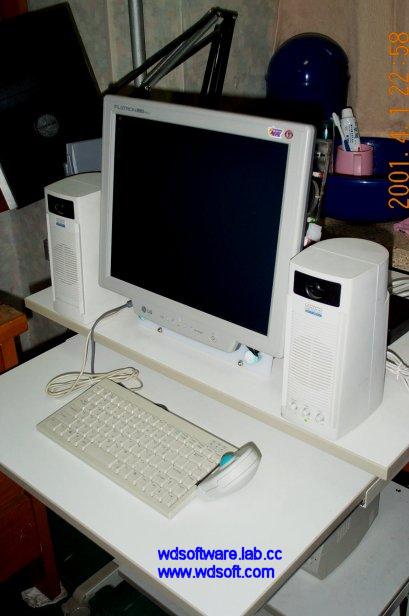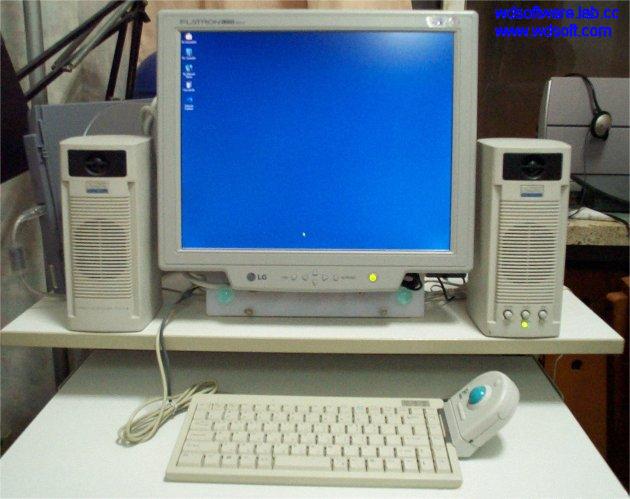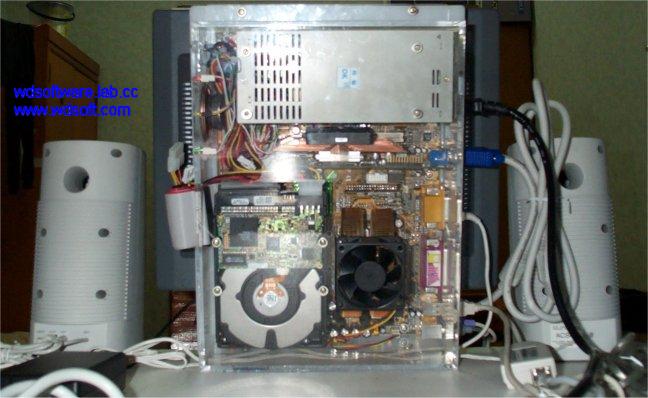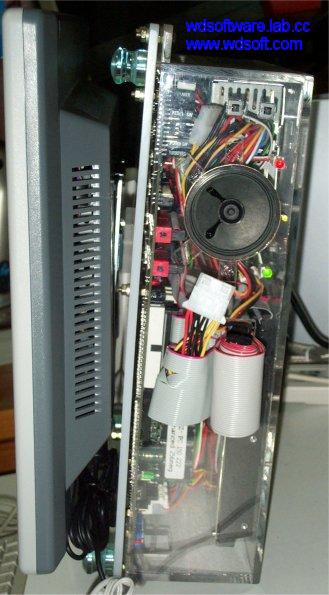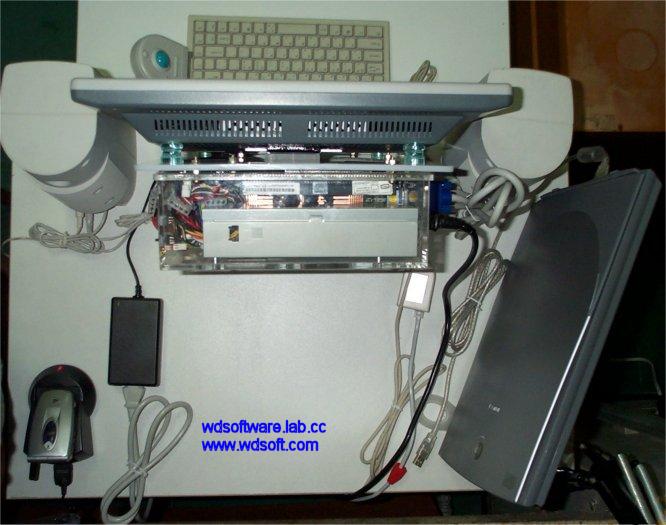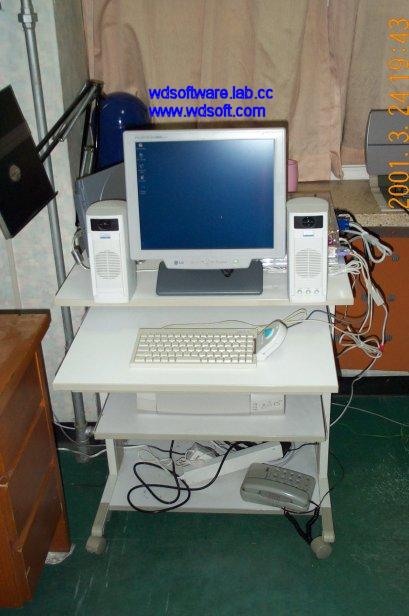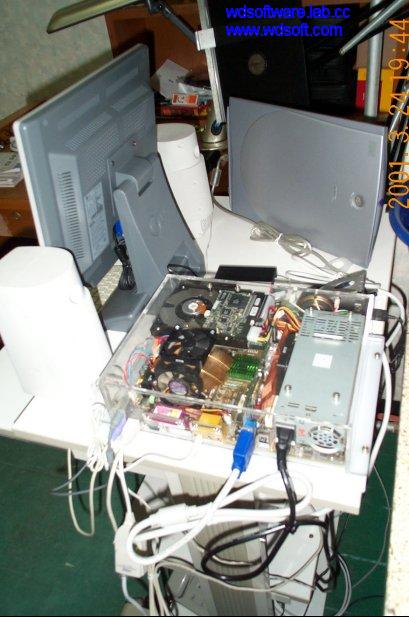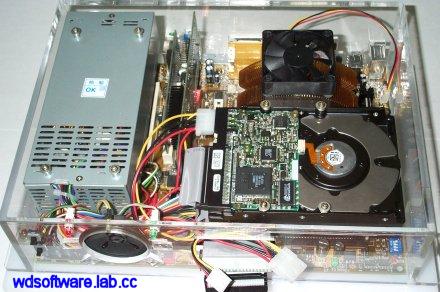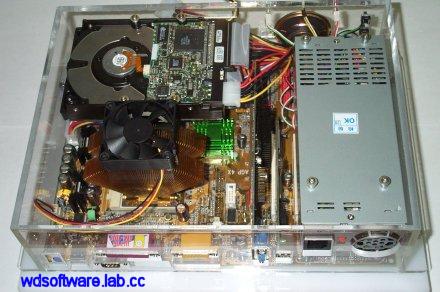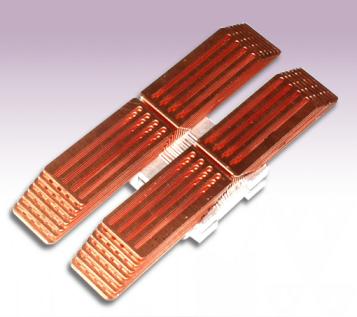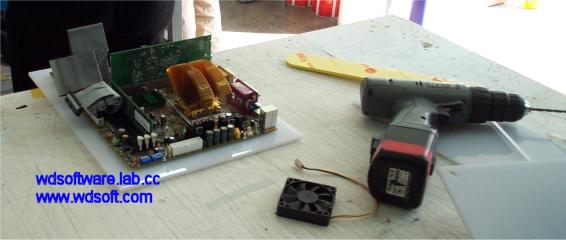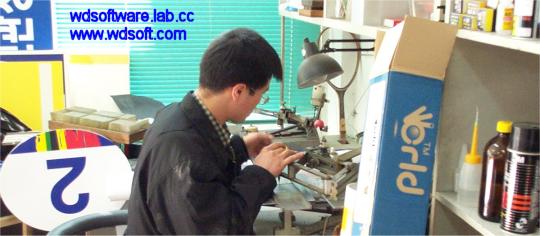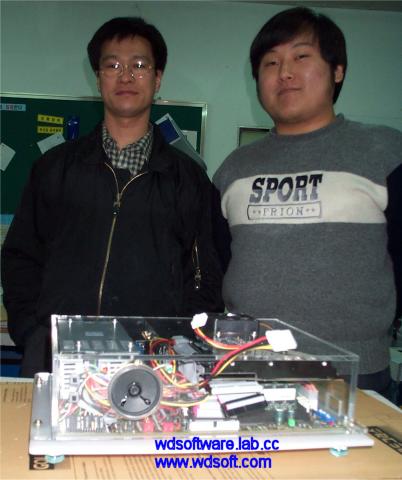Making of the Portable Athlon (10/10)
Posted by Wesley onYou would have noticed that the innards of the system has indeed changed since the initial photo shoot. To show you this more closely, I've taken a more close up picture.
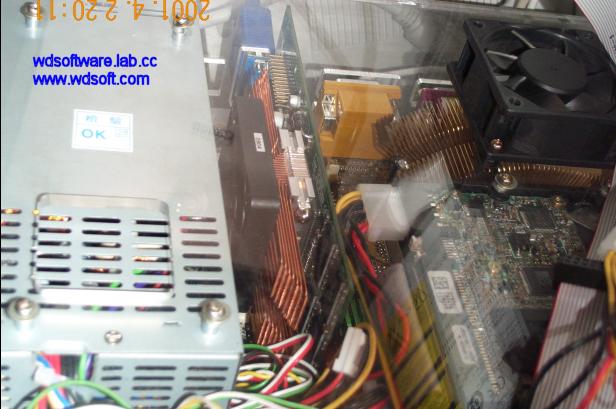
You can see how the copper flower cooler for the video card is attached, as well as the new fan that's cooling the CPU. Also, to prevent overheating of the PSU, a hole has been made over the vent holes. Some of the careful observers may point out that the wirings are a bit more organized, too.
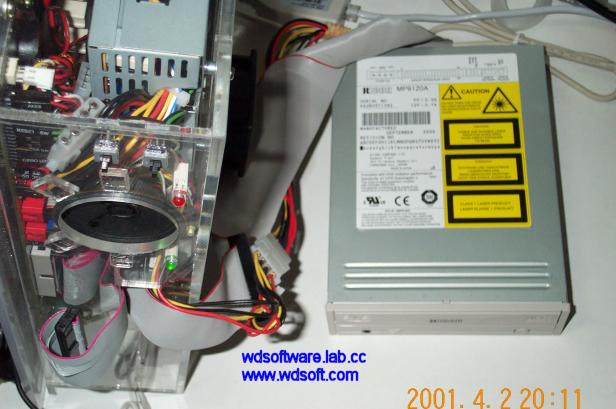
Here's how the RICOH burner gets attached to the system when I need to access optical discs or do some burning. The rolled IDE cable can easily extend out to accomodate the drive, and the drive has a power cable extension so that it can get powered.
Well, that's it for now. I may update this with pictures of me actually carrying the system in a bag or doing other stuff with it. But it's already close to 4AM as I'm finishing this up and I need some sleep. Yawn... Why is it that I always finish my articles when it's past my bed time? Argh...
